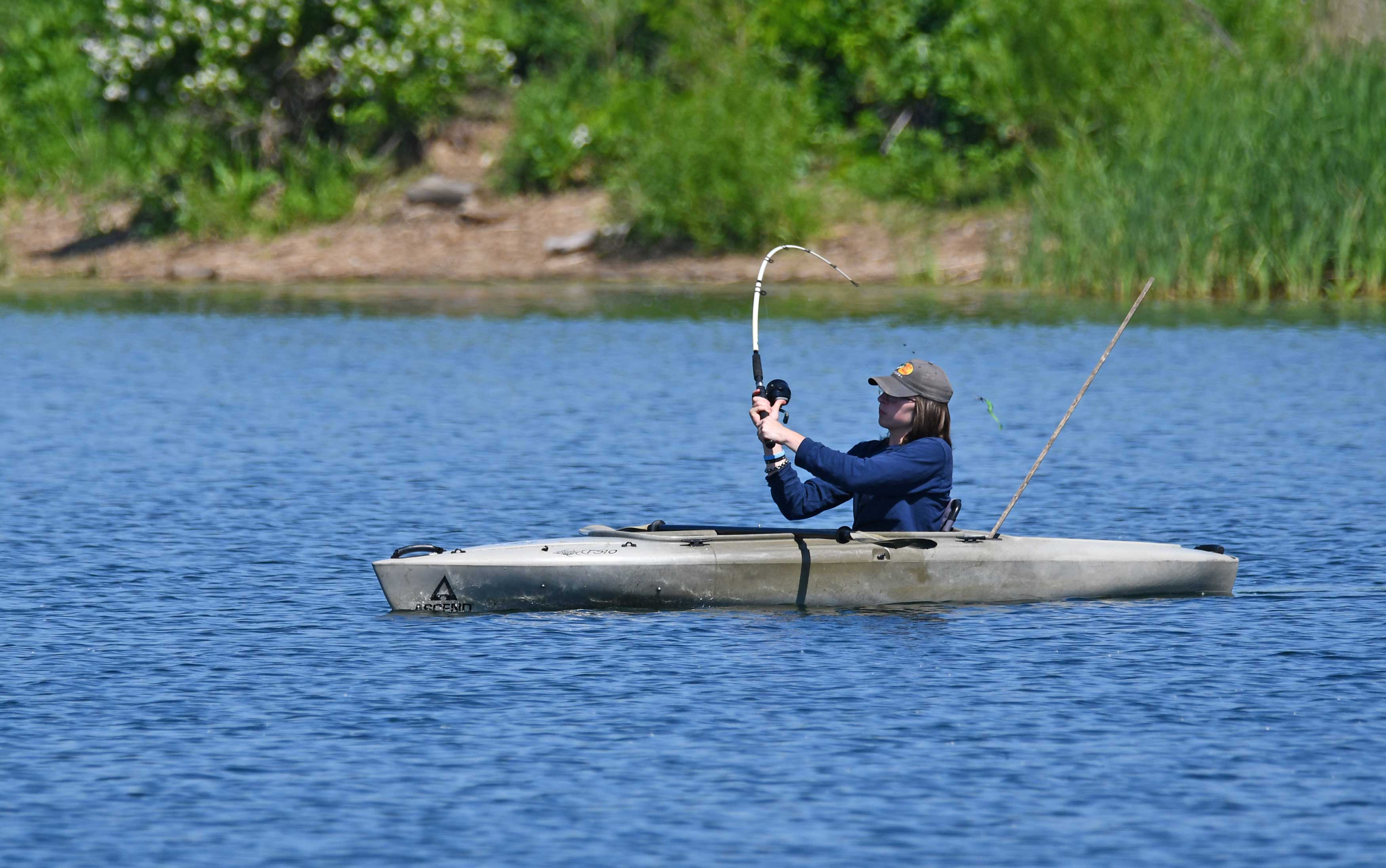| Story by Meghan McMahon |
6/7/2024
Fishing is one of the most popular activities within the Forest Preserves, but that doesn’t stop some from complaining that the fish don’t bite some of our most popular fishing spots.
The staff at Monee Reservoir often hear people complain that there’s nothing to catch in the lake, but the number of people who return to cast a line time and again tell a different story, said Jason Stevenson, the office manager at Monee Reservoir.
“If people were not catching fish, we would not have as many regulars as we do,” he said.
Bass, bluegill, catfish, crappies and perch are all popular catches at Monee Reservoir, Stevenson said, adding that what people are finding on the end of their line can vary based on the time of year and where people are fishing.
At Hidden Lakes Trout Farm, the Forest Preserve’s newest premier fishing spot, popular catches are bluegills, carp, catfish, crappies and largemouth bass, said David Piotrowski, the concessions manager at the facility’s Tackle Box bait shop. In April and October, anglers can also catch trout after the ponds are stocked for the state trout fishing seasons.

)
)
)
)
)
)
)
)
)
)
)